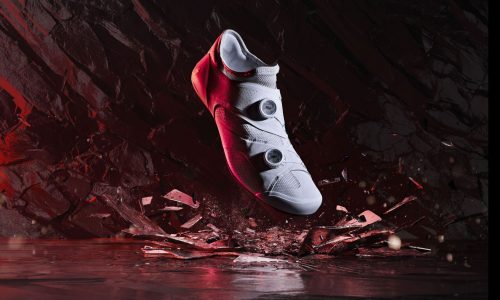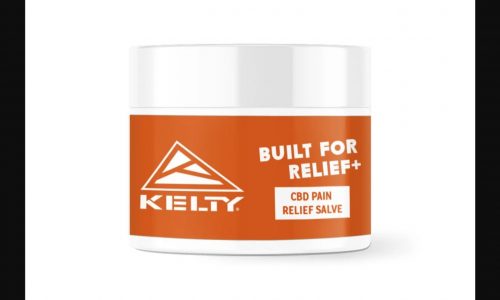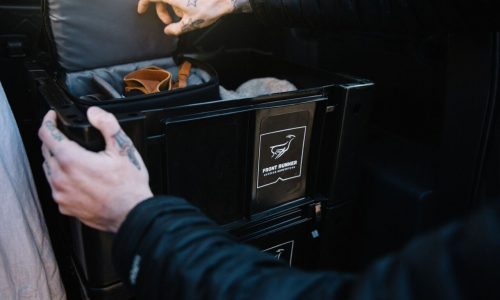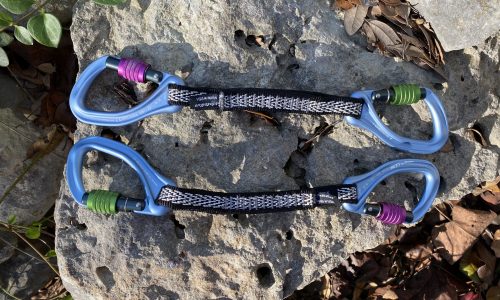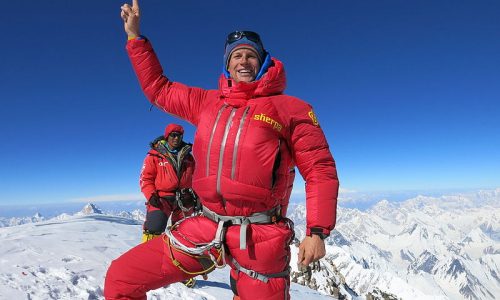Darcy Turenne is a professional mountain biker and filmmaker from Vancouver Island, Canada. Known internationally for her riding, Darcy started working in television as a presenter for the globally syndicated travel/adventure show “Ride Guide” and has been featured in hundreds of publications worldwide, including Rolling Stone and Men’s Journal.
Darcy’s work has taken her around the globe to many exotic locales including India, Bolivia, Japan, Scandinavia, and Indonesia—and that has just been in the past year. Despite her busy filming schedule, Darcy continues to hold her status as one of best female freeride mountain bikers in the world. She is the creator and organizer of the world’s first women’s mountain bike festival, See Jane Jump.
The Gear Institute caught up with her at home as she was packing her bags for her next trip to India.
GI: How did you get into riding?
DT: When I was a teenager, the librarian at my junior high started an all girls mountain bike club. I played all sorts of team sports. So it was easy for me to get into it. I like that there was no competition. Really, I fell in love with it after my first ride.
GI: Do women ride differently then men?
For sure. I think we are more progressive in our skill building. Men just huck—no rationalization goes on—it’s all testosterone. Women have that to an extent but we think about things a lot longer, it takes longer for us to get to the end point. We take smaller steps; we want cause and effect. We’re a lot more rational, not as impulsive.
GI: Is there a perfect first bike for a female rider?
DT: The advice I give new female riders is don’t sell yourself short. You’ll have a better time riding if you make a bit of an investment. Get a women’s specific bike for your first bike. Don’t get a crap bottom of the barrel entry-level bike. You’ll have a lot more fun. Once you have a bike, getting your bike fit dialed is important. It can take a year to tweak. Even if your bike doesn’t feel perfect out of the box, talk to your local mechanic, get your suspension tuned, adjust your saddle. There is a lot you can do. Take the time to do it.
GI: What’s your most important piece of gear on the trail?
DT: My helmet. I feel naked without it. It’s a bad idea to ride without one. In fact I don’t know anyone in their right mind who rides without one. I have a tiny head—so it’s hard to find a helmet that fits. A helmet should feel like a hat—not too tight or too lose. In fact, if your helmet fits you, you shouldn’t even feel like you are wearing one. I wear the 661 Evo Carbon Camber fullface downhill helmet. My cross-country helmet is the 661 Recon Stealth. And I have a 661 Dirt Lid for skatepark, dirt jump, and BMX riding.
GI: What’s the piece of gear most people leave home that they shouldn’t?
DT: A really light windbreaker. I wear one from [my sponsor] Dakine’s Girl’s Breaker Jacket that’s about as heavy as a sheet of paper. It’s saved me so many times when it’s unexpectedly gotten cold and windy.
GI: What’s your secret to a great day on the trail?
DT: Lots of food. I like to eat anything. A good hearty sandwich really gets me excited. I also eat a lot of dried fruit, and I drink lots of water.
GI: What’s your advice for someone who wants to go bigger but is scared?
DT: I would take a course or camp or get some coaching from a female coach. When a female is being taught by a woman, her progression is so much faster. Women break it down. We understand the process. And ride with women better than you and see how they are doing it.
GI: Do you participate in product design with your sponsors?
DT: I designed a women’s specific bike for Norco, the Vixa. It’s a freeride bike based on typical women’s geometry—shorter brake levers, thinner grips, lighter parts, different angles that makes pulling up easier. It was tuned for me personally. I’ve never felt like I wanted to change anything on that bike. It feels like an extension of my body. I also help with Dakine’s women’s lines. They come to me for feedback and they’re really open to suggestions. Dakine is one of the companies that is most committed to women’s products. They are full gung-ho on getting girls out on bikes. I love their drafter pack. It’s gone with me around the world. It can carry so much, and it totally holds up. I just really like it.
GI: You’ve worked with female athletes and aspiring athletes throughout North America and in Asia. What’s the biggest barrier for women who want to get into mountain biking?
DT: Based on my research in Indonesia, a lot of it has to do with societal roles that women are expected to play. The role of the women is so important in the family and household community in general, that when they take leisure time or do leisure activities, it creates a vacuum in the family and the community. In Indonesia, at least, women are the keeper of the family, finances, and religion. It’s women’s role to appease the gods. Women playing sports compromises that balance—it sacrifices women’s ability to fulfill their societal role.
GI: What about in North America?
DT: In US and Canada, the same dynamic is true—but it’s more subtle. In western society, we’re not necessarily supposed to fill traditional roles, but at the same time, as women, we’ve been shaped to feel that we should be caregivers and caretakers. I think we have undercurrent of guilt, conscious or not, when we stray from those roles. And for women, the image of sports conflicts with the image of who we are supposed to be. A lot of it is marketing. Playing sports is not portrayed as attractive or even feminine by the media let alone sexy or glamorous. The message that girls get in magazines is that your goal should be to be pretty so you get the man of your dreams. So a lot of girls don’t want to get involved in sports, particularly ones that might give them bruises.
GI: What was your greatest riding adventure?
DT: Last year, my teammate and a photographer went to Bolivia. The photographer knew an American there with a mountain bike tour company and an entire trail network that he built up at 16,000 feet. It was so far away.
GI: What’s on your life list for riding?
DT: I really want to ride in the Yukon because it’s supposedly beautiful, and it’s in Canada. I’d like to ride in Nepal—but maybe I’d just like to trek there instead. I’ve ridden a lot in Utah, but I’m always dying to go back there and ride. When I am old, I’d love to ride through New Zealand, France and Italy and do the cheesy bike tour stuff my parents would do.
Editor: Here’s some of Darcy’s recent work, which she recently tweeted (she’s at @hellodarcy). I’m a fan of this one. @justinnyberg










